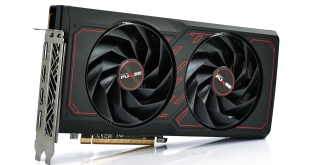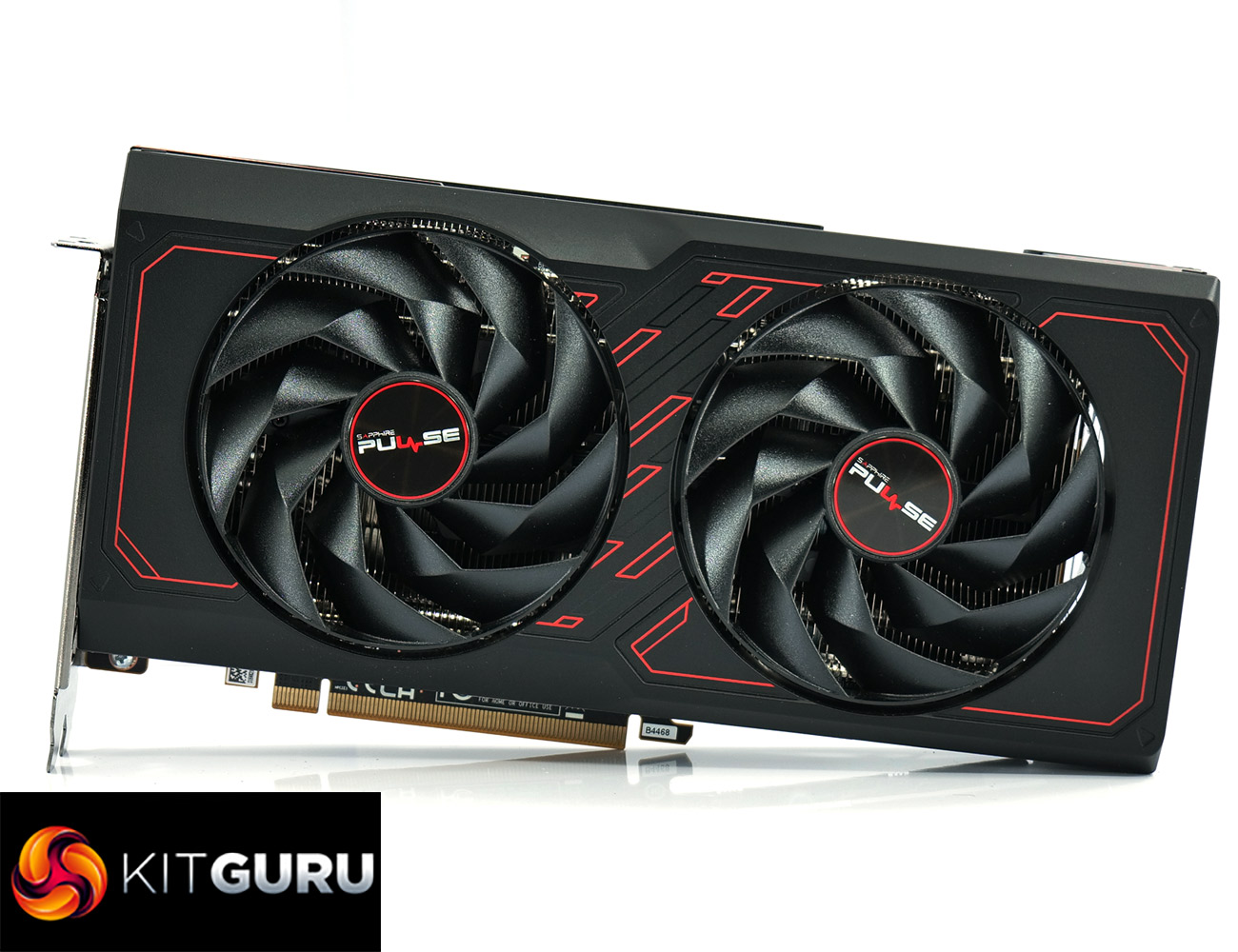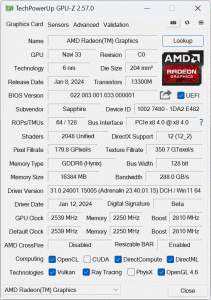
2024 feels like it's only just begun and we're already onto our third GPU launch in as many weeks. This time it's AMD's turn in the spotlight, as we put the recently announced RX 7600 XT through its paces. This graphics card is all about the VRAM, offering a 16GB framebuffer at a £310/$329 asking price. Today we find out what sort of performance is on offer, and whether or not it's worth paying extra for over the vanilla RX 7600.
If you missed the initial announcement at CES 2024, the AMD RX 7600 XT is very easy to summarise – it's basically an RX 7600 but with slightly higher clocks and double the VRAM. That means there's no change to the underlying silicon, you get the exact same number of cores, ROPS and so on. As a result, any differences in performance compared to the RX 7600 non-XT are purely as a result of the increased clock speeds and memory.
Still, in a landscape where 8GB GPU launches had a pretty tough ride last year, could the move to double the framebuffer be a welcome one? We put the Sapphire RX 7600 XT Pulse to the test in twelve games, plus another eight with ray tracing, to find out…
If you want to read this review as a single page, click HERE.
| RX 7900 XT | RX 7800 XT | RX 7700 XT | RX 7600 XT | RX 7600 | |
| Architecture | RDNA 3 | RDNA 3 | RDNA 3 | RDNA 3 | RDNA 3 |
| Manufacturing Process | 5nm GCD + 6nm MCD | 5nm GCD + 6nm MCD | 5nm GCD + 6nm MCD | 6nm | 6nm |
| Transistor Count | 57.7 billion | 28.1 billion | 28.1 billion | 13.3 billion | 13.3 billion |
| Die Size | 300 mm² GCD
220 mm² MCD |
200 mm² GCD
150 mm² MCD |
200 mm² GCD
150 mm² MCD |
204 mm² | 204 mm² |
| Compute Units | 84 | 60 | 54 | 32 | 32 |
| Ray Accelerators | 84 | 60 | 54 | 32 | 32 |
| Stream Processors | 5376 | 3840 | 3456 | 2048 | 2048 |
| Game GPU Clock | Up to 2000 MHz | 2124 MHz | 2171 MHz | 2470 MHz | 2250 MHz |
| Boost GPU Clock | Up to 2400 MHz | Up to 2430 MHz | Up to 2544 MHz | Up to 2755 MHz | Up to 2625 MHz |
| ROPs | 192 | 96 | 96 | 64 | 64 |
| AMD Infinity Cache | 80MB | 64MB | 48MB | 32MB | 32MB |
| Memory | 20GB GDDR6 | 16GB GDDR6 | 12GB GDDR6 | 16GB GDDR6 | 8GB GDDR6 |
| Memory Data Rate | 20Gbps | 19.5 Gbps | 18Gbps | 18Gbps | 18Gbps |
| Memory Bandwidth | 800 GB/s | 624 GB/s | 432 GB/s | 288 GB/s | 288 GB/s |
| Memory Interface | 320-bit | 256-bit | 192-bit | 128-bit | 128-bit |
| Board Power | 315W | 263W | 245W | 190W | 165W |
First, let's take a quick look at the specs. Just like the RX 7600, the 7600 XT uses the monolithic Navi 33 die, fabbed on makes TSMC's 6nm node, with a 204 mm² die size. It's the exact same configuration, too. Navi 33 packs in 32 Compute Units, each of which houses 64 Stream Processors, for a total of 2048 shaders. There's also 32 Ray Accelerators – one per CU – and 64 ROPs.
Clock speed is the first real change compared to the RX 7600, as the 7600 XT sees a roughly 10% higher game clock, rated at 2470 MHz, while there's a boost clock of 2755 MHz. The Sapphire Pulse model I am reviewing today has pushed this slightly higher too, with a rated 2810 MHz boost clock.
Meanwhile, the memory sub-system is almost identical to the previous generation RX 6600. We still find a 128-bit interface, with memory that clocks in at 18Gbps, resulting in memory bandwidth of 288 GB/s, though AMD claims an ‘effective' bandwidth of 476.9 GB/s due to the 32MB of 2nd Gen Infinity cache. The key change is of course that the amount of VRAM has now doubled, with the RX 7600 XT outfitted with 16GB.
As with Navi 23, Navi 33 also features a cut-down PCIe interface, offering a Gen4 x8 connection.
Power draw for the RX 7600 XT is the final change over the RX 7600, as it is now rated at 190W Total Board Power (TBP), an increase from the 165W figure of the RX 7600. We are using our updated GPU power testing methodology in this review, so read on for our most detailed power and efficiency testing yet.
 KitGuru KitGuru.net – Tech News | Hardware News | Hardware Reviews | IOS | Mobile | Gaming | Graphics Cards
KitGuru KitGuru.net – Tech News | Hardware News | Hardware Reviews | IOS | Mobile | Gaming | Graphics Cards




